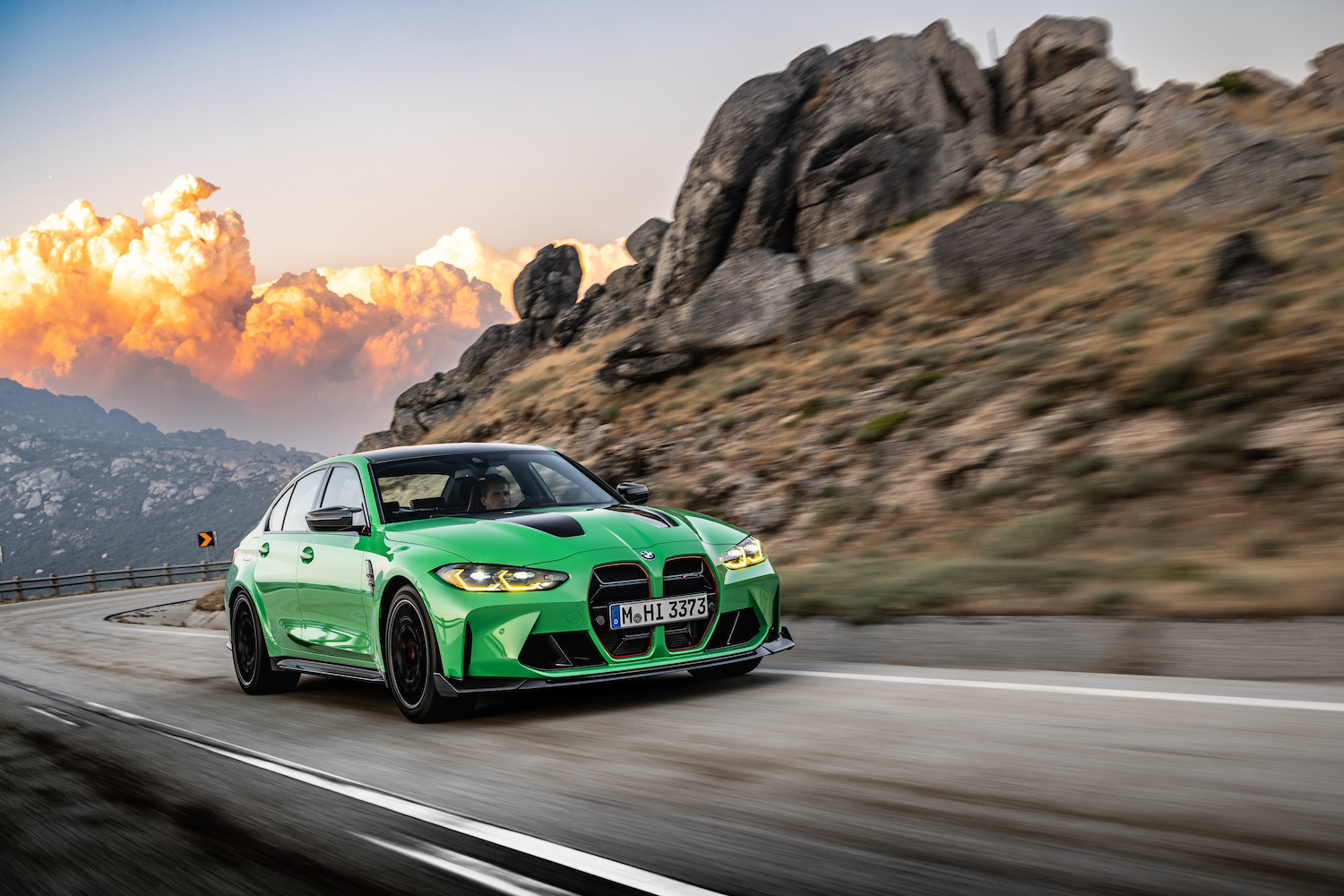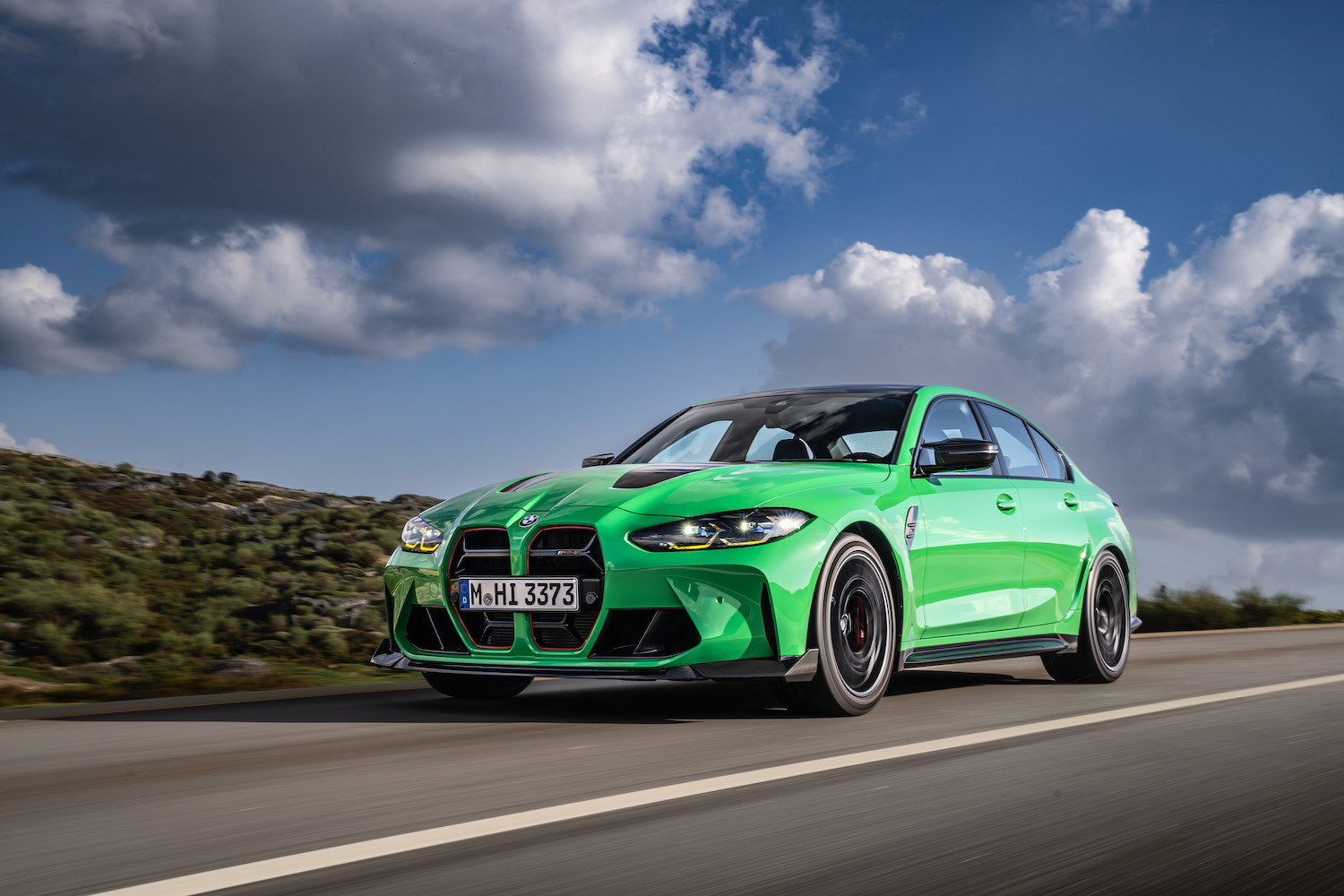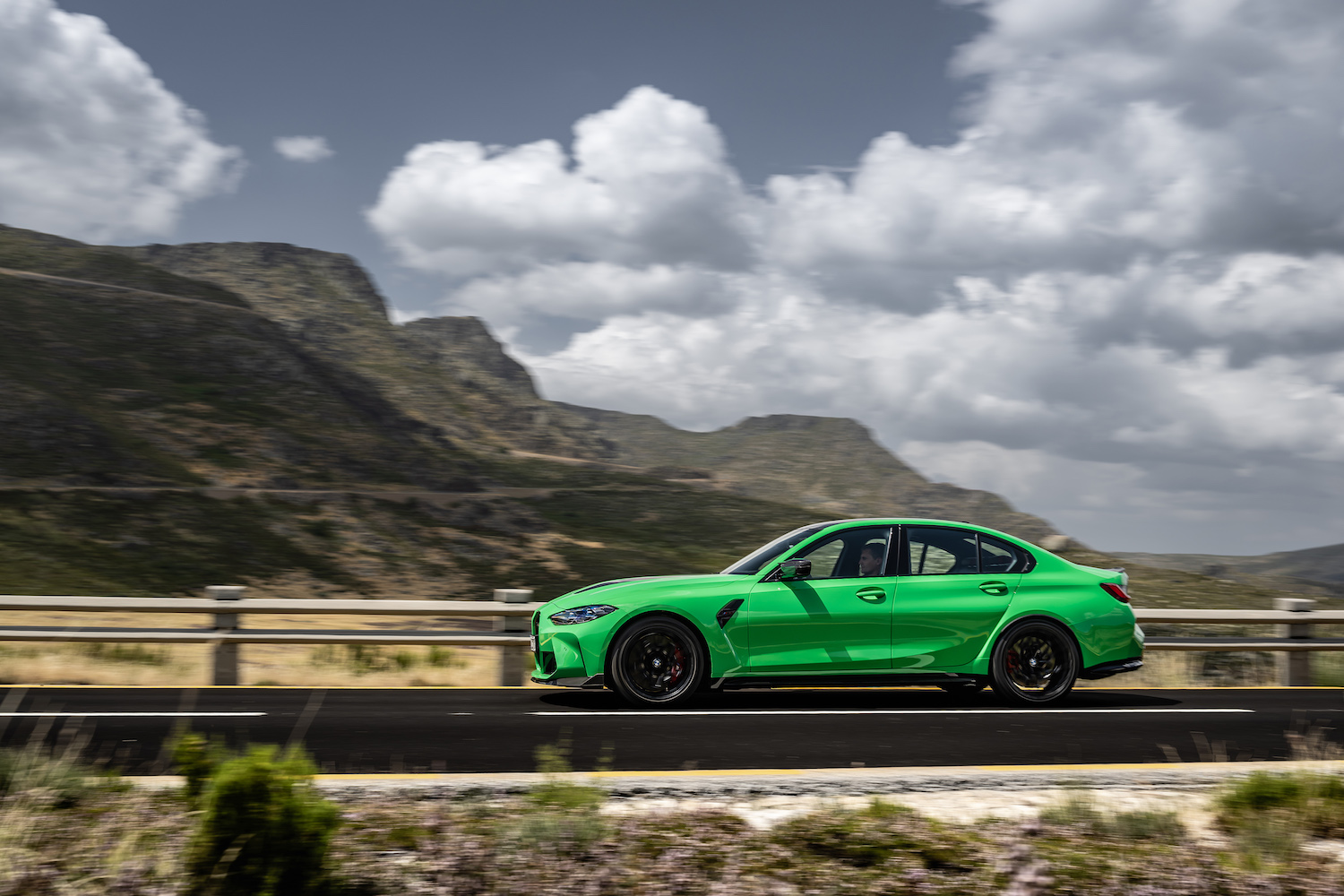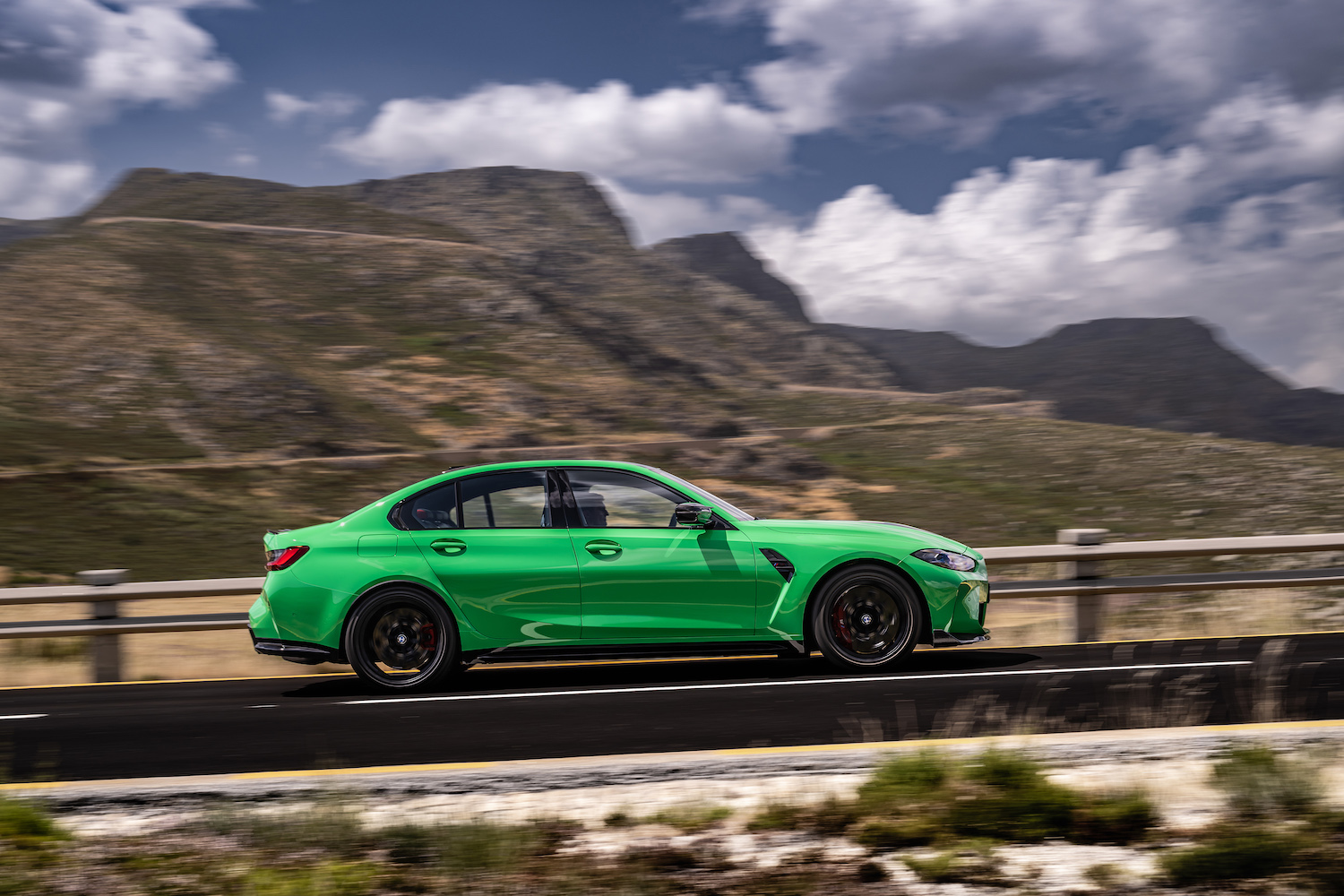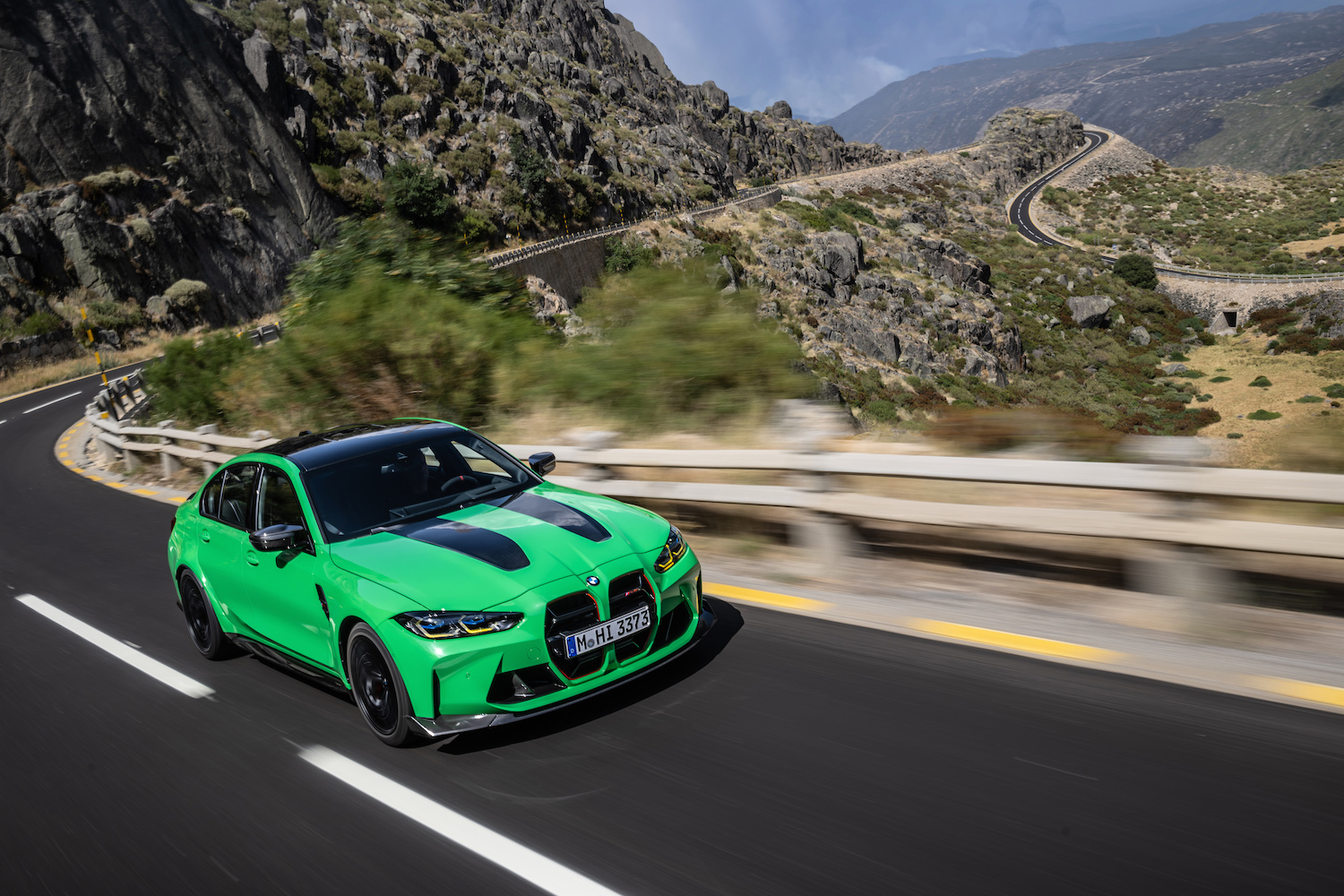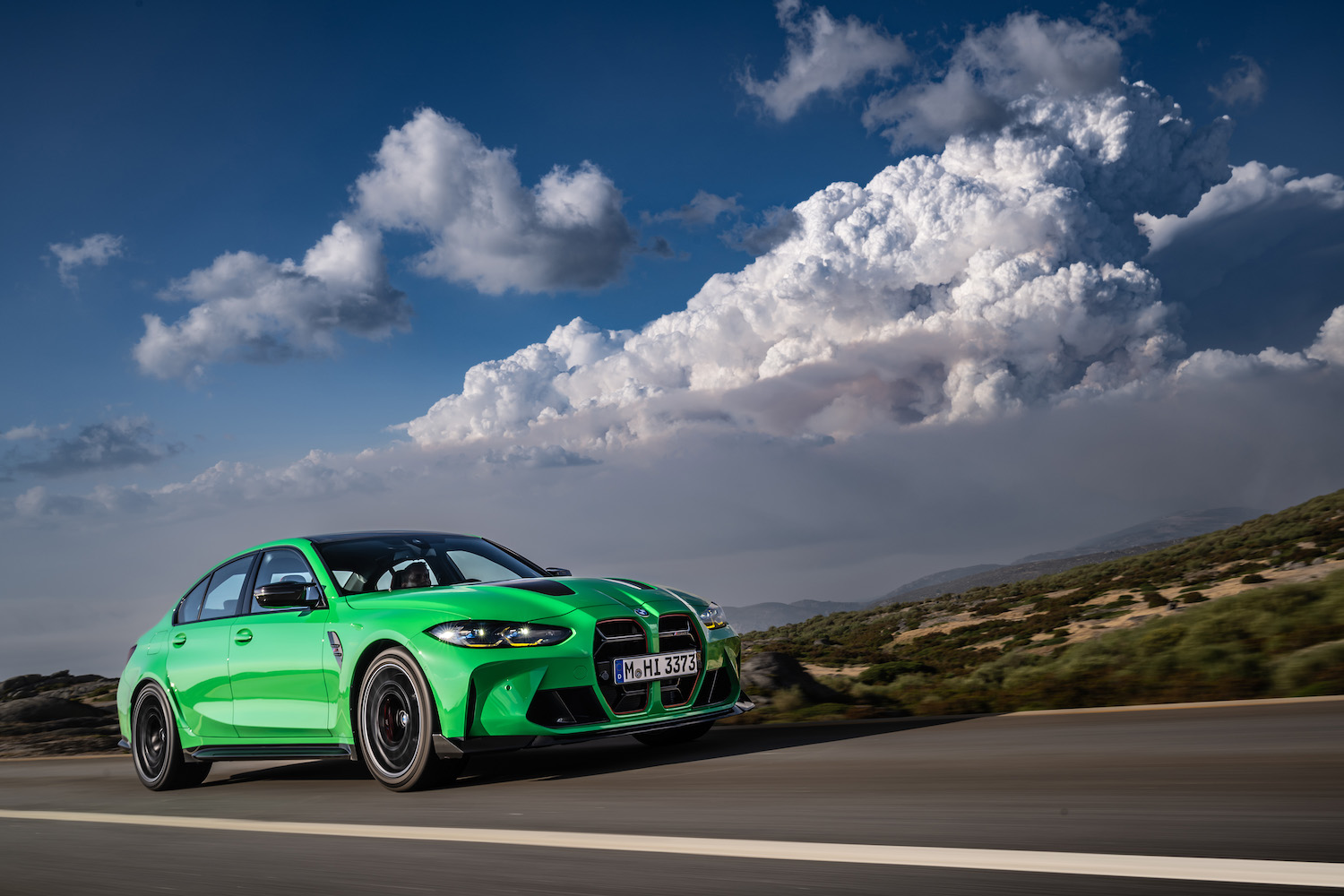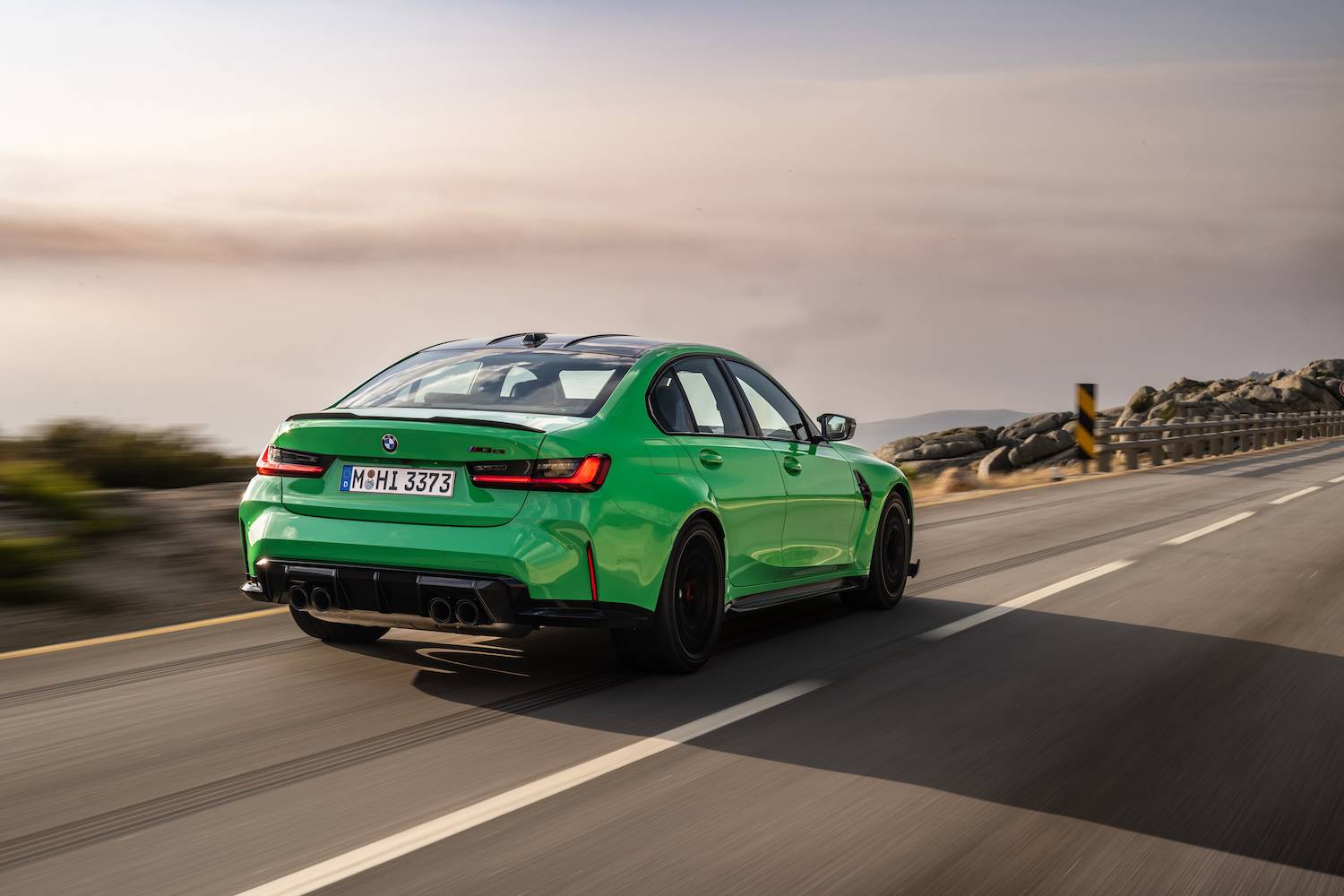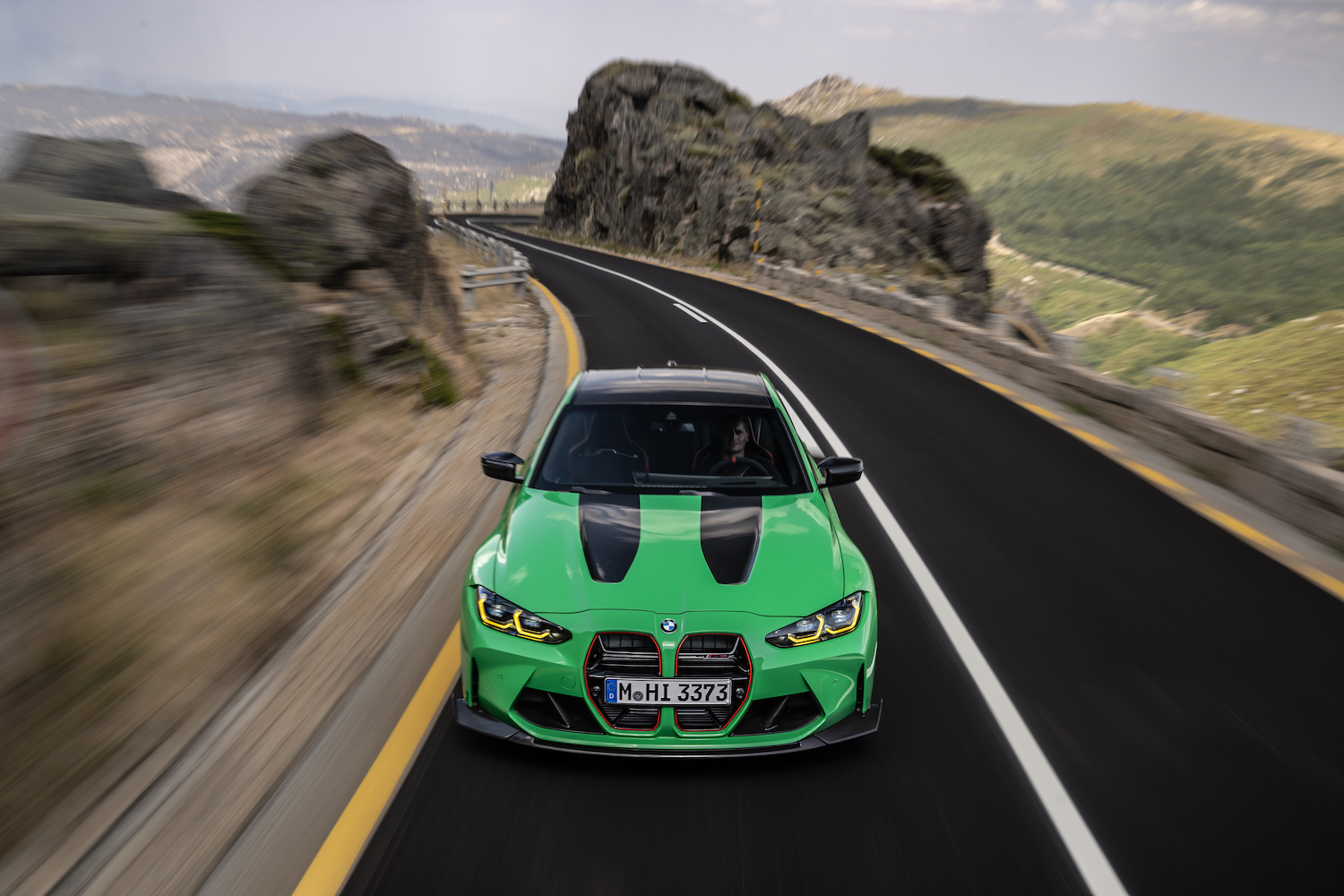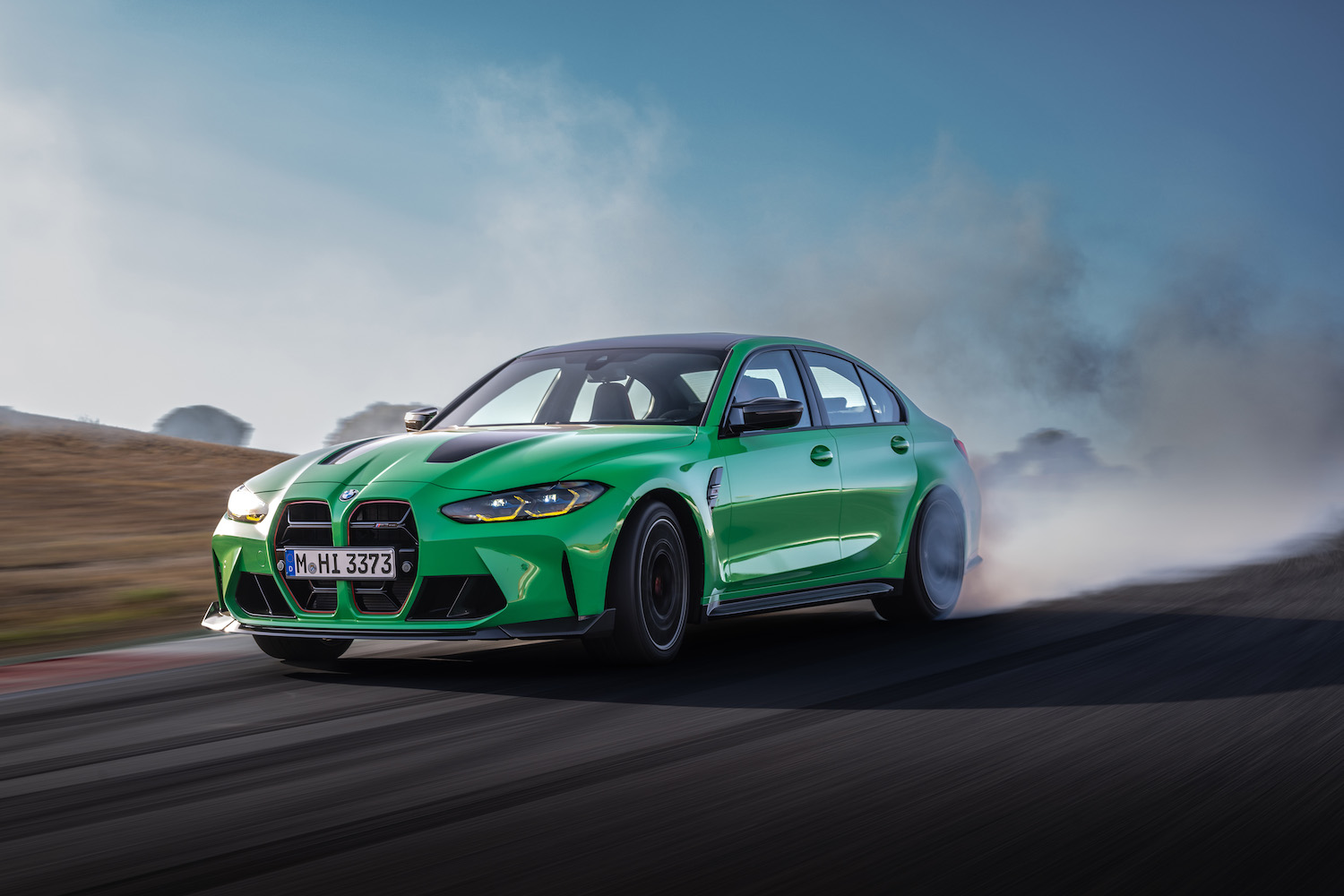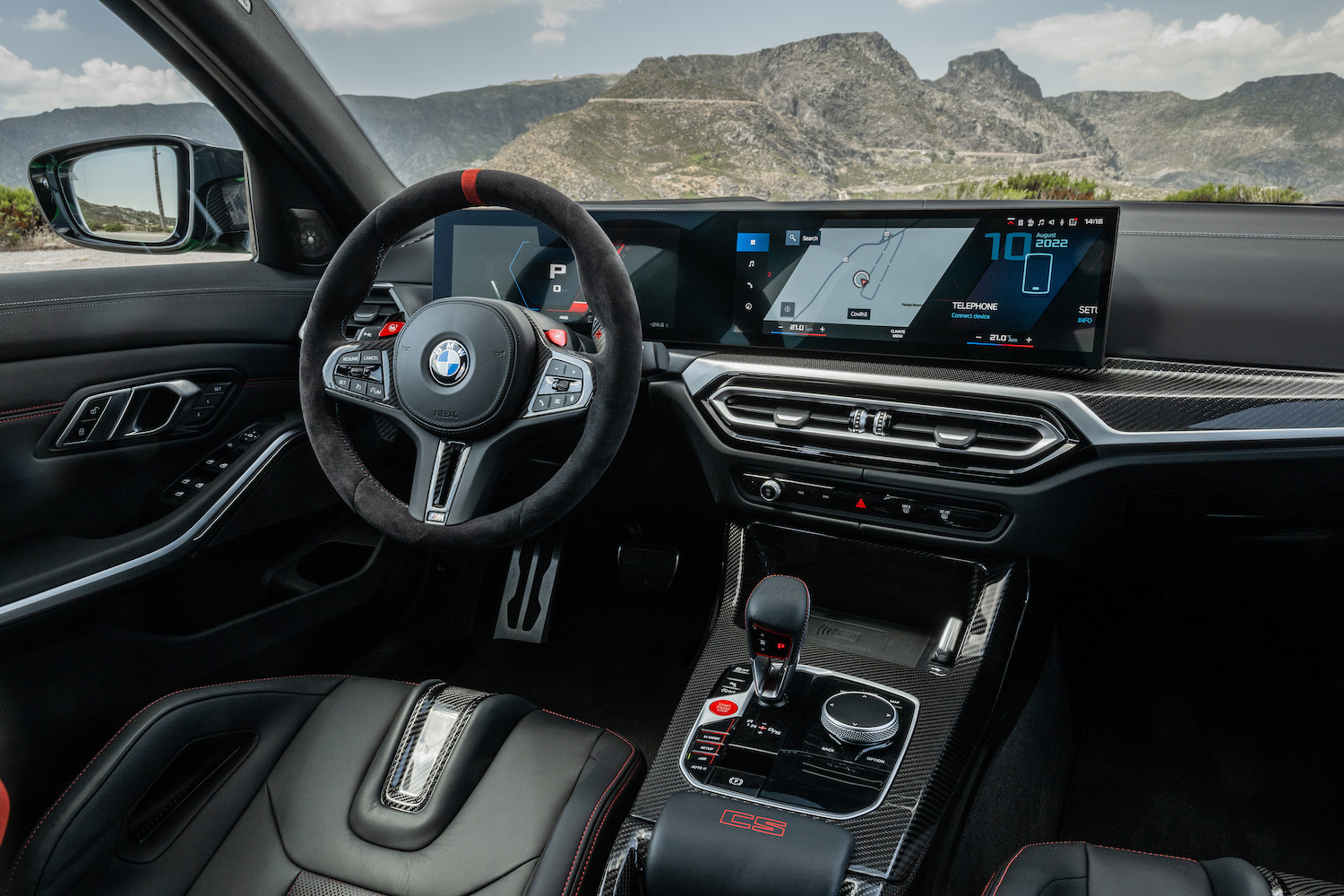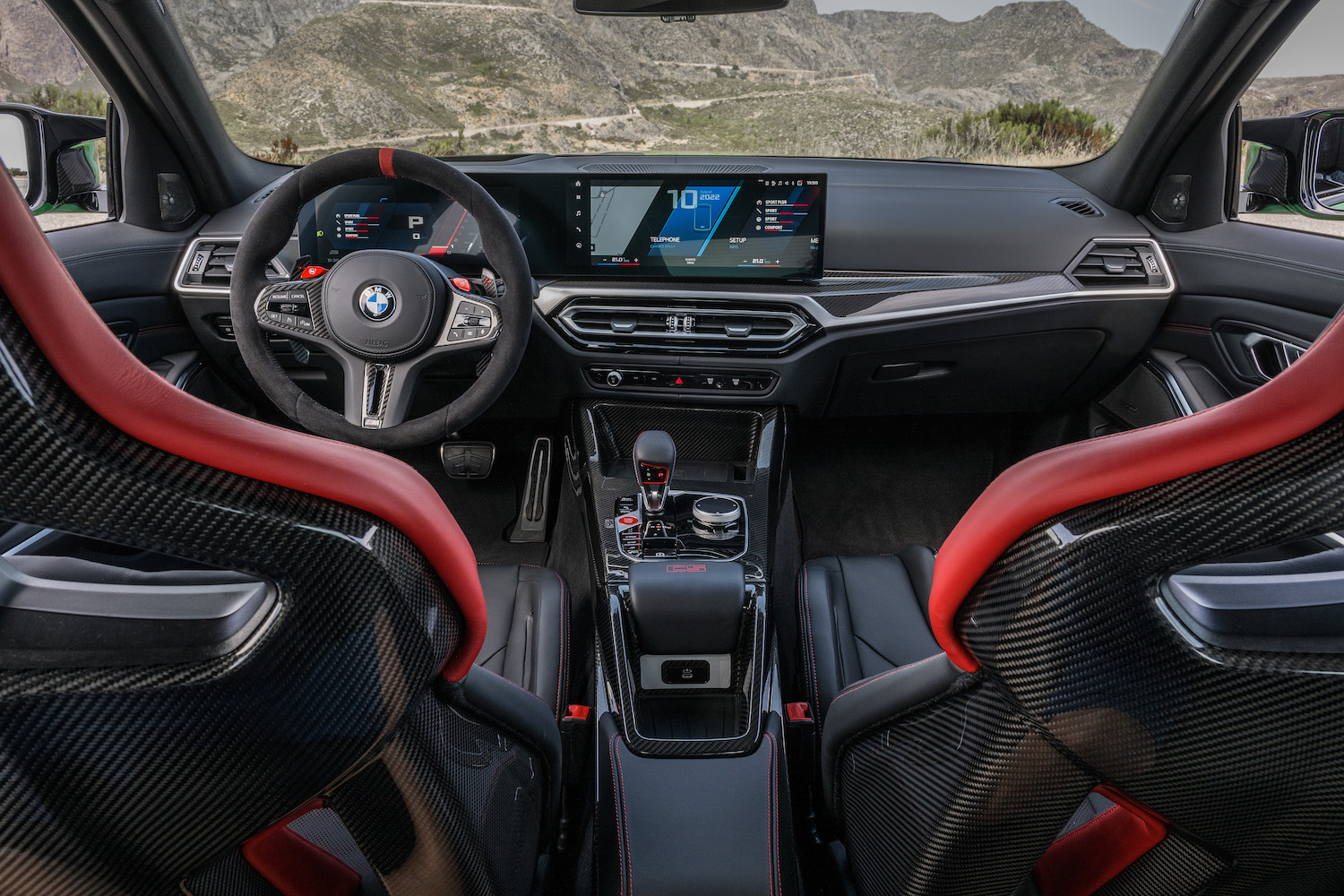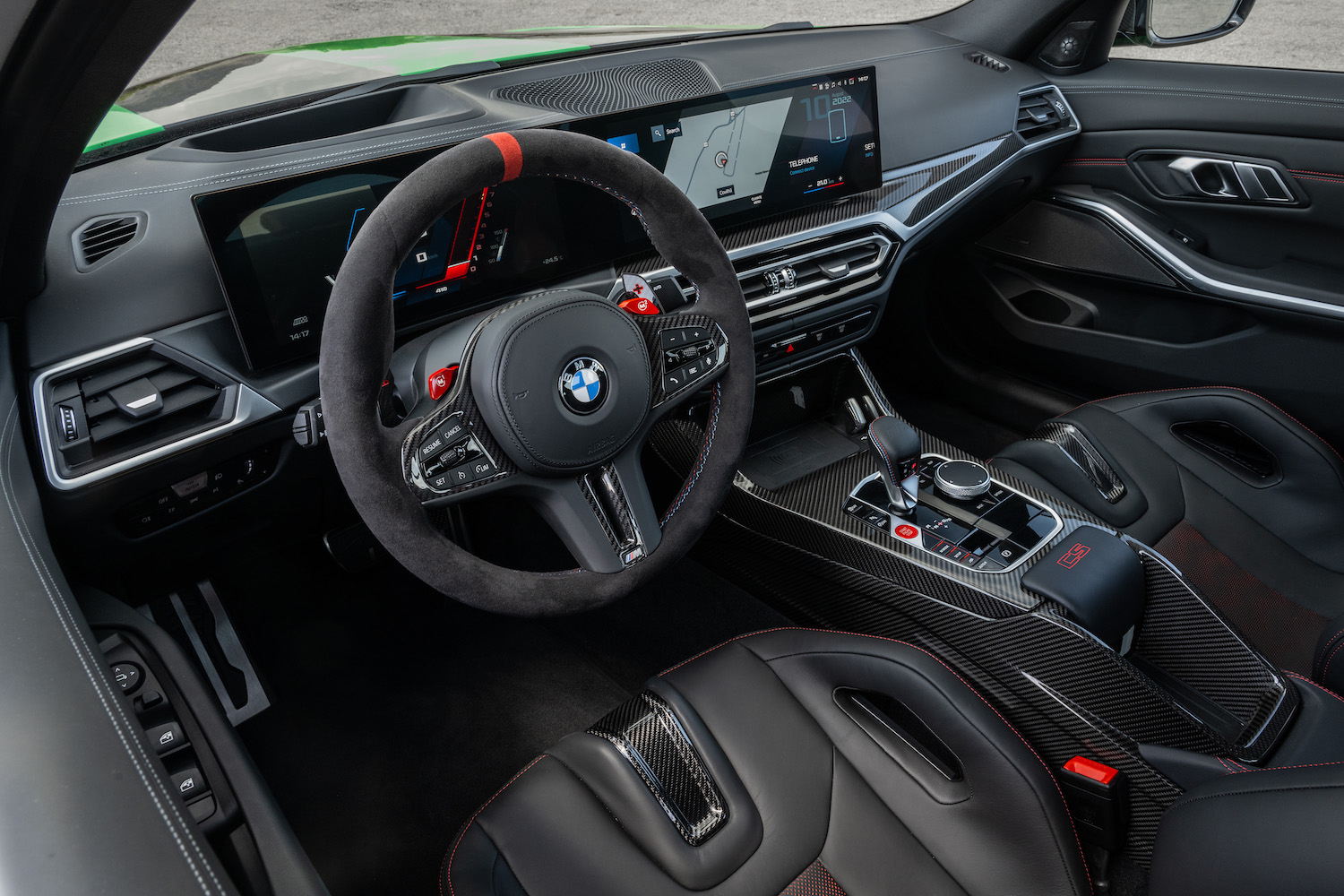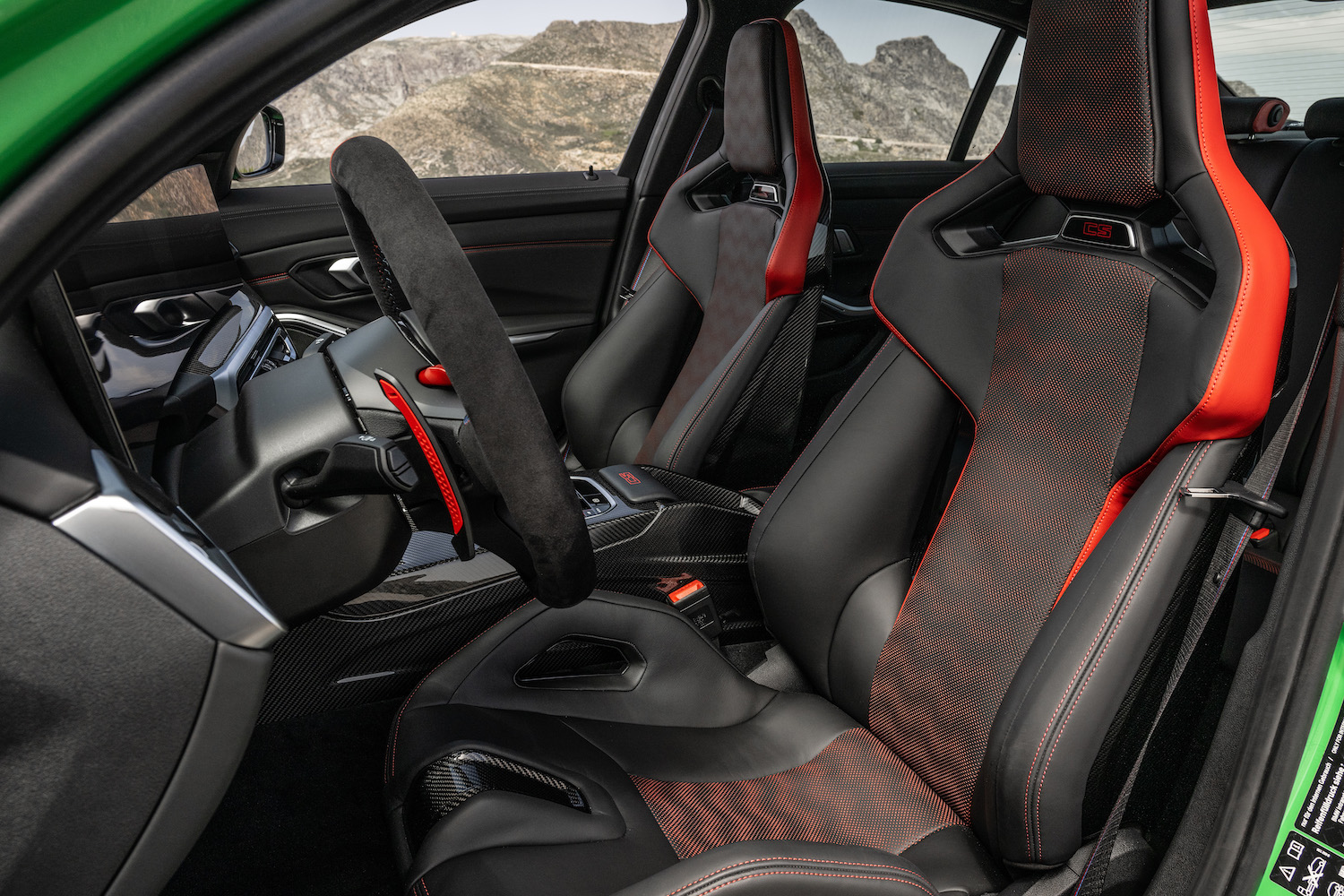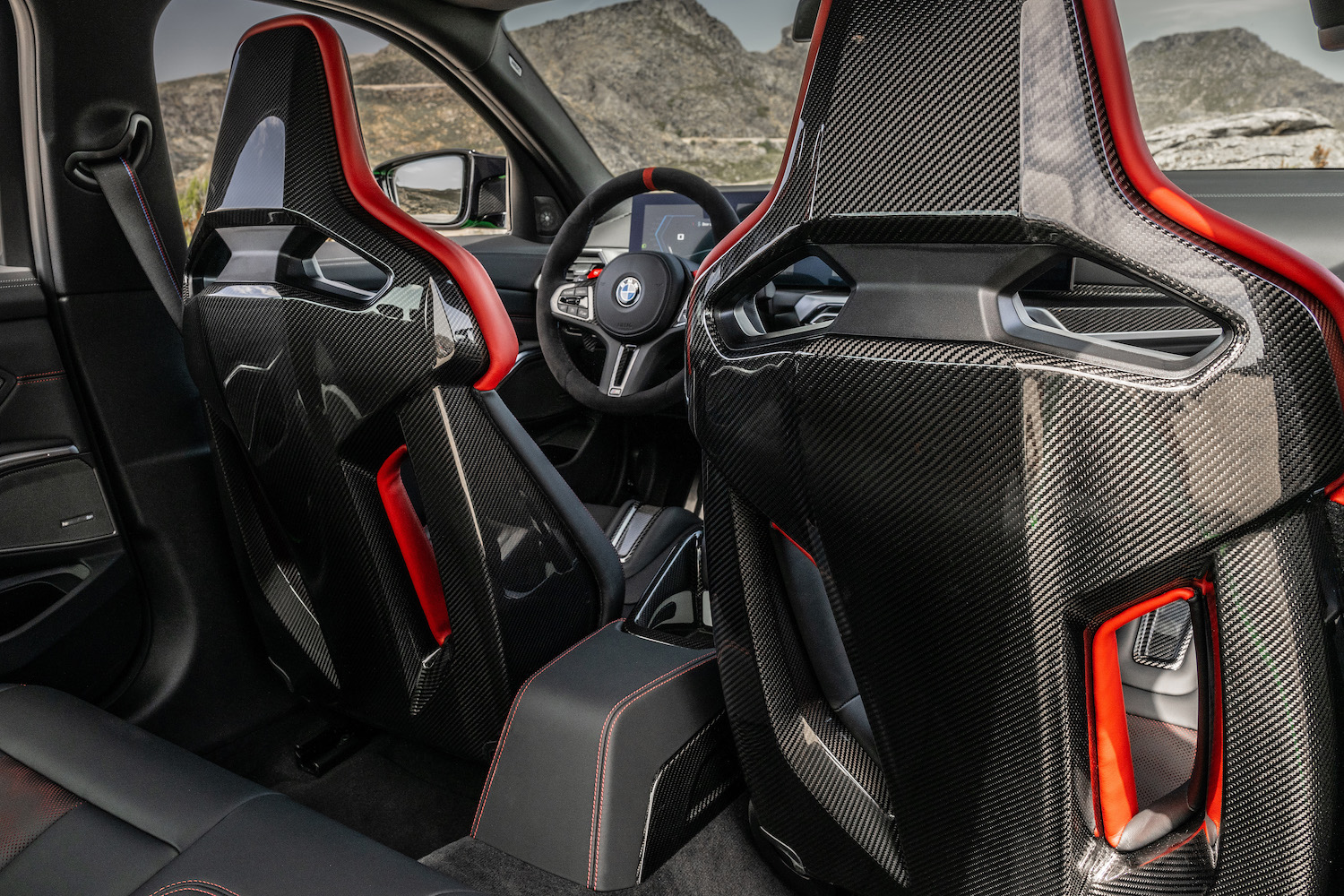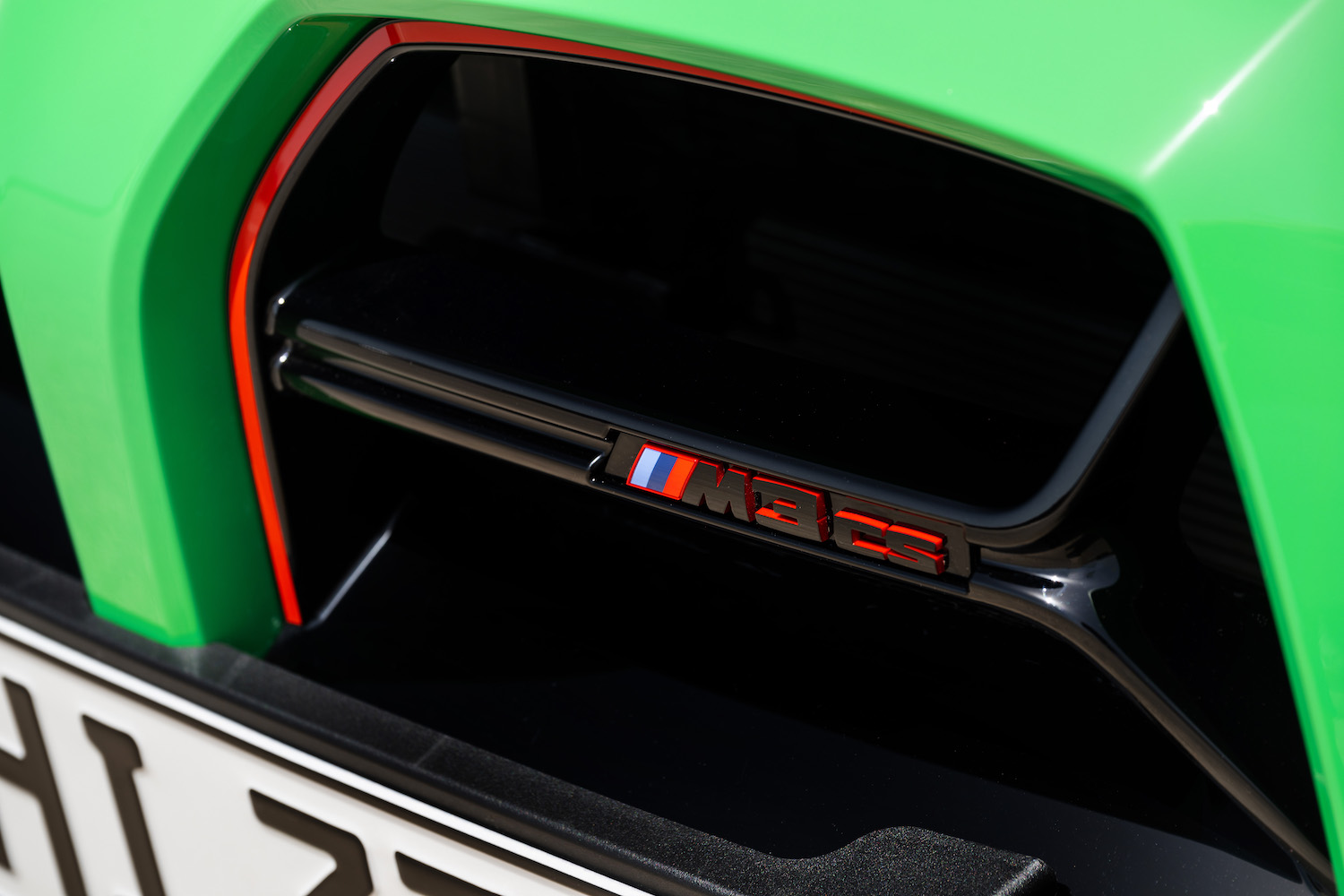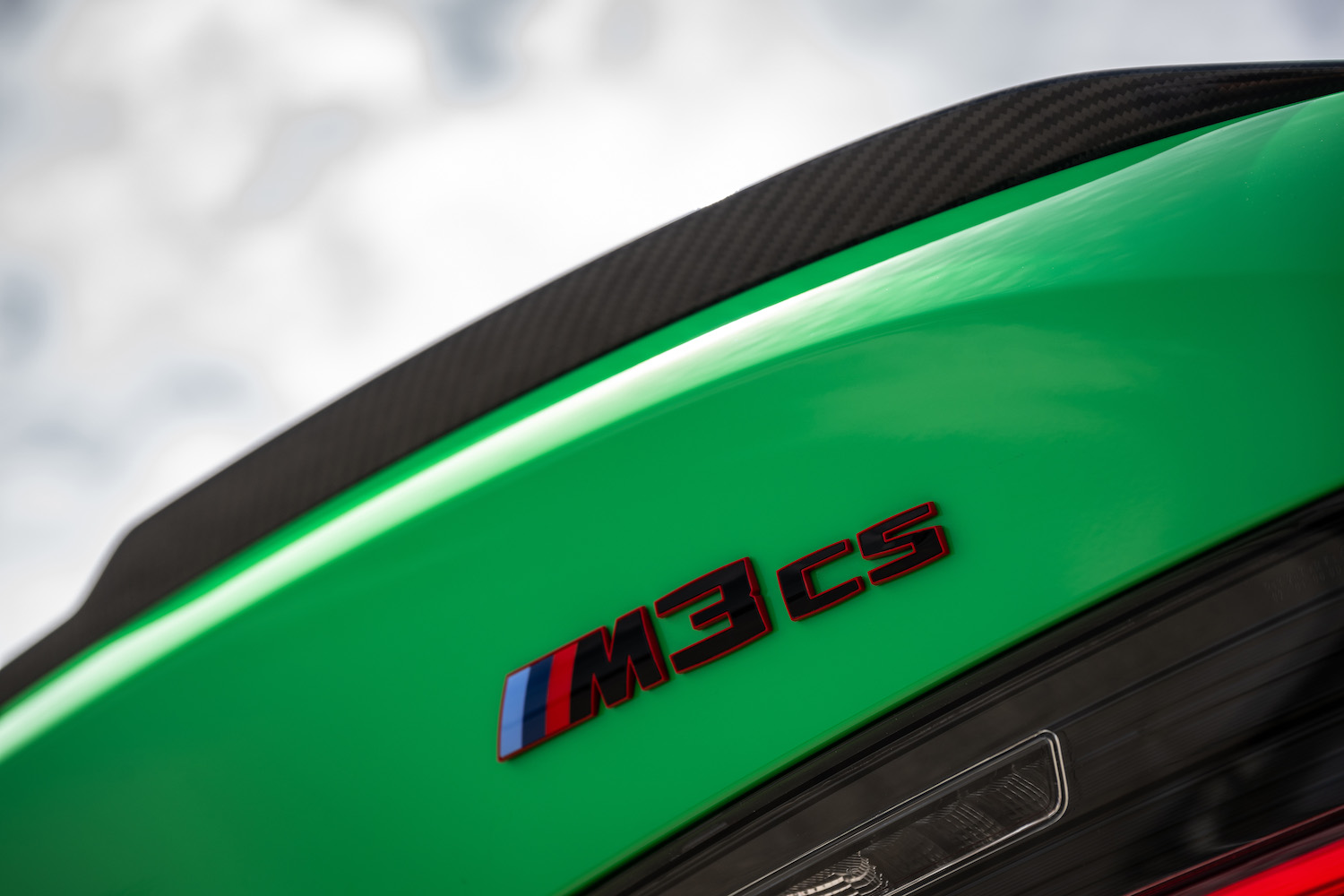Usually, BMW only introduces hardcore variants of its two-door models. Its sedans, even the M-branded ones, have usually been seen as the more accessible models for everyone to enjoy. That’s changed recently with vehicles like the M5 CS and now with the new M3 CS. Forget about the M3’s friendly demeanor and approachability, the M3 CS is out for blood and makes the already bonkers M3 Competition look like chum in the water.
The main difference between the limited-edition BMW M3 CS and other M3s in the lineup is some extra power. The CS-badged option gets a retuned version of the twin-turbo 3.0-liter six-cylinder engine that’s rated at 543 horsepower compared to 503 horsepower in the M3 Competition xDrive. The extra boost in performance comes from, you guessed it, extra boost pressure. The M3 CS’s engine is running at 30.5 psi, while the M3 Competition operates at 24.7 psi. Torque goes unchanged at 479 pound-feet of torque.
Being based on the M3 Competition, the M3 CS comes with a rear-wheel-drive-biased all-wheel-drive system and a quick-shifting eight-speed automatic transmission. The extra boost in power, all-wheel-drive system, and transmission help the M3 CS be the quickest M3 variant available. The cranked-up sedan will get to 60 mph in just 3.2 seconds. For those keeping score, that’s 0.2 seconds quicker than the M3 Competition xDrive and 0.4 seconds quicker than the M4 CSL.
Other performance updates for the M3 CS include an upgraded cooling system and unique engine mounts that create a more rigid connection between the engine and chassis. We’re taking the latter as a noise and vibration enhancer, as we expect the M3 CS to provide the driver with feedback on every rev from the engine. The sedan also gets tuned anti-roll bars and electronically controlled dampers for sharper handling, unique tuning for the steering, special camber settings, and updated calibration for stability control.
While the M3 CS has all-wheel drive, drivers can adjust how much power is routed to the rear wheels by selecting 4WD Sport in the M Setup menu. Choosing 2WD turns the M3 CS into a rear-wheel-drive rocket that’s capable of pulling off smokey drifts. When not in do crazy things with rear-wheel-drive mode, the M3 CS is sure to have a copious amount of grip as it comes with unnamed high-performance tires as standard, while Michelin Pilot Sport Cup 2 tires are available as a no-cost option. The M3 CS comes with M Compound brakes as standard, though drivers can spec M Carbon ceramic brakes.
On top of gaining more power, the M3 CS has reached peak physical form by dropping weight. The M3 CS has received a generous amount of carbon-fiber-reinforced plastic on body components like the hood, roof, mirror caps, front air intakes, front splitter, rear spoiler, rear diffuser, shift paddles, center console, and interior trim. BMW’s weight-saving measures have gone to extreme lengths, as the M3 CS’ titanium rear silencer reportedly sheds eight pounds versus the standard exhaust system. The interior also sheds some pounds thanks to new M Carbon bucket seats. Overall, BMW has managed to cut 75 pounds compared to the M3 Competition xDrive.
BMW has confirmed that it will be building a limited number of M3 CS sedans, but didn’t specify how many would actually be produced. The M4 CSL is limited to just 1,000 units worldwide, so it would make sense to limit the 2024 BMW M3 CS to a similar figure. Consumers will have to give BMW an extra $36,100 over the M3 Competition xDrive to get into a M3 CS, which will start at $199,695 (with destination). That’s a lot of money, but the M3 CS does sound like the most extreme four-door BMW M3 ever built.
